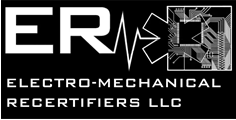Rajan Ambat
Department of Manufacturing and Management
Technical University of Denmark
2800 Kgs. Lyngby, Denmark
Abstract
Electronic industry uses a number of metallic materials in various forms. Also new materials and technology are introduced all the time for increased performance. In recent years, corrosion of electronic systems has been a significant issue. Multiplicity of materials used is one reason limiting the corrosion reliability. However, the reduced spacing between components on a printed circuit board (PCB) due to miniaturization of device is another factor that has made easy for interaction of components in corrosive environments. Presently the knowledge on corrosion issues of electronics is very limited. This paper reviews briefly the materials used in electronic systems, factors influencing corrosion, types of corrosion observed in electronics, and testing methods.
Introduction
Presently electronic devices are used under service conditions that were never thought off few years back. Simultaneously, increased use of electronics has also increased the demand for reliability. The demand for miniaturization, multiplicity of materials used, effect of process residues together with unpredictable user environment has opened up serious corrosion problems. The consumer electronics is one sector where the user environment is highly variable. Overall size of electronic equipment has also been decreasing presently at a faster rate. The size of the ICs has been decreased by a factor of 10 over the last couple of years, which means that the spacing between the IC components is ~ 200 nm. For components on a PCB, the spacing is around 5 microns, while in mid-90’s it was 100 microns. The reduction in size and distance between components makes the system more susceptible to corrosion problems. To generate a fault in the conducting path of such constructions, a material loss of the order of picograms (10-12) is sufficient [1]. Therefore, even a small environmental impact can cause huge damages if the components are not well protected. When the device is in use, the large voltage gradients between points on a PCB will accelerate the corrosion problems
dramatically. However, the impact of voltage gradient on PCB corrosion is often overlooked with respect to damage in electronic circuits.

Recent Comments